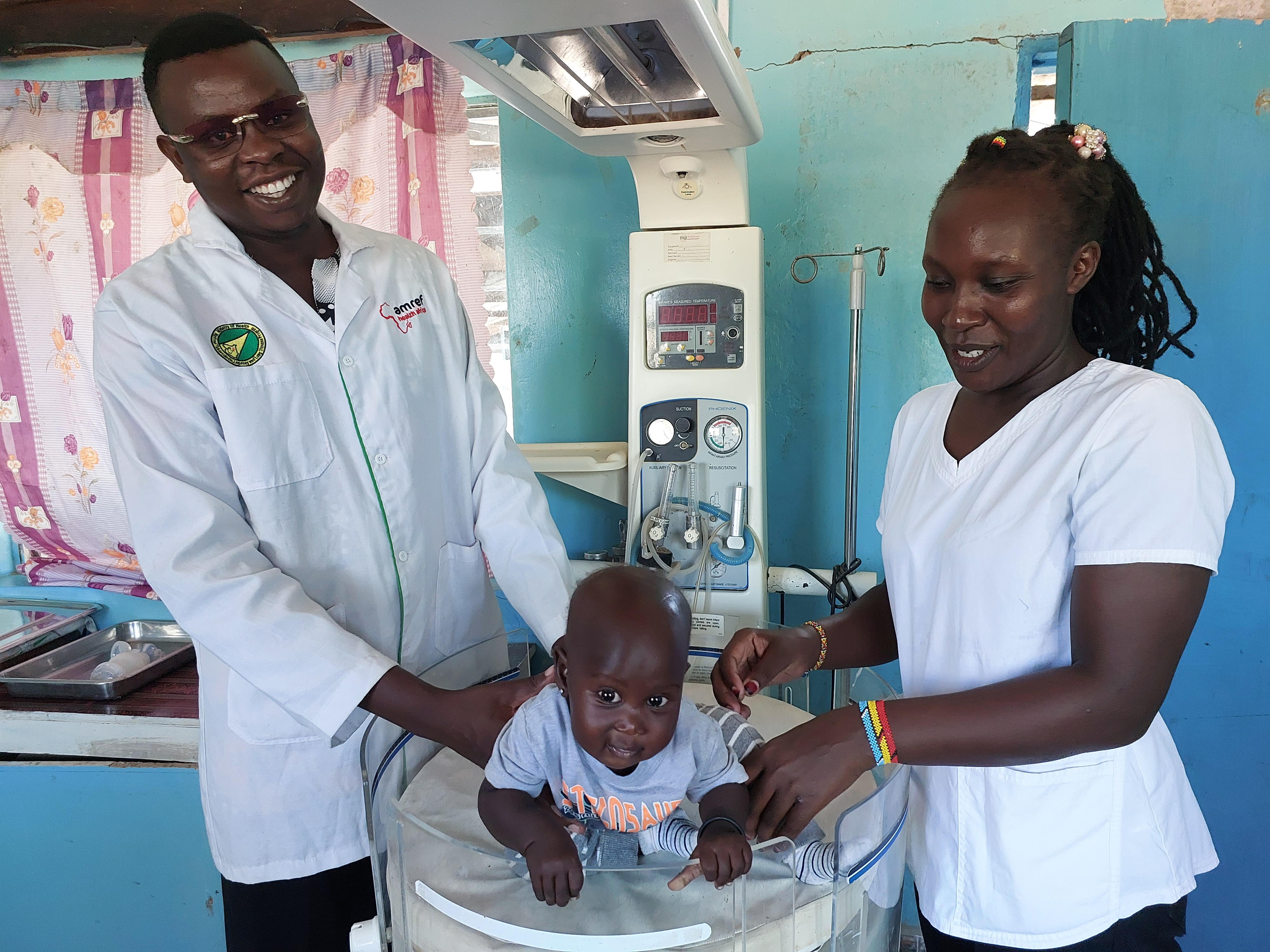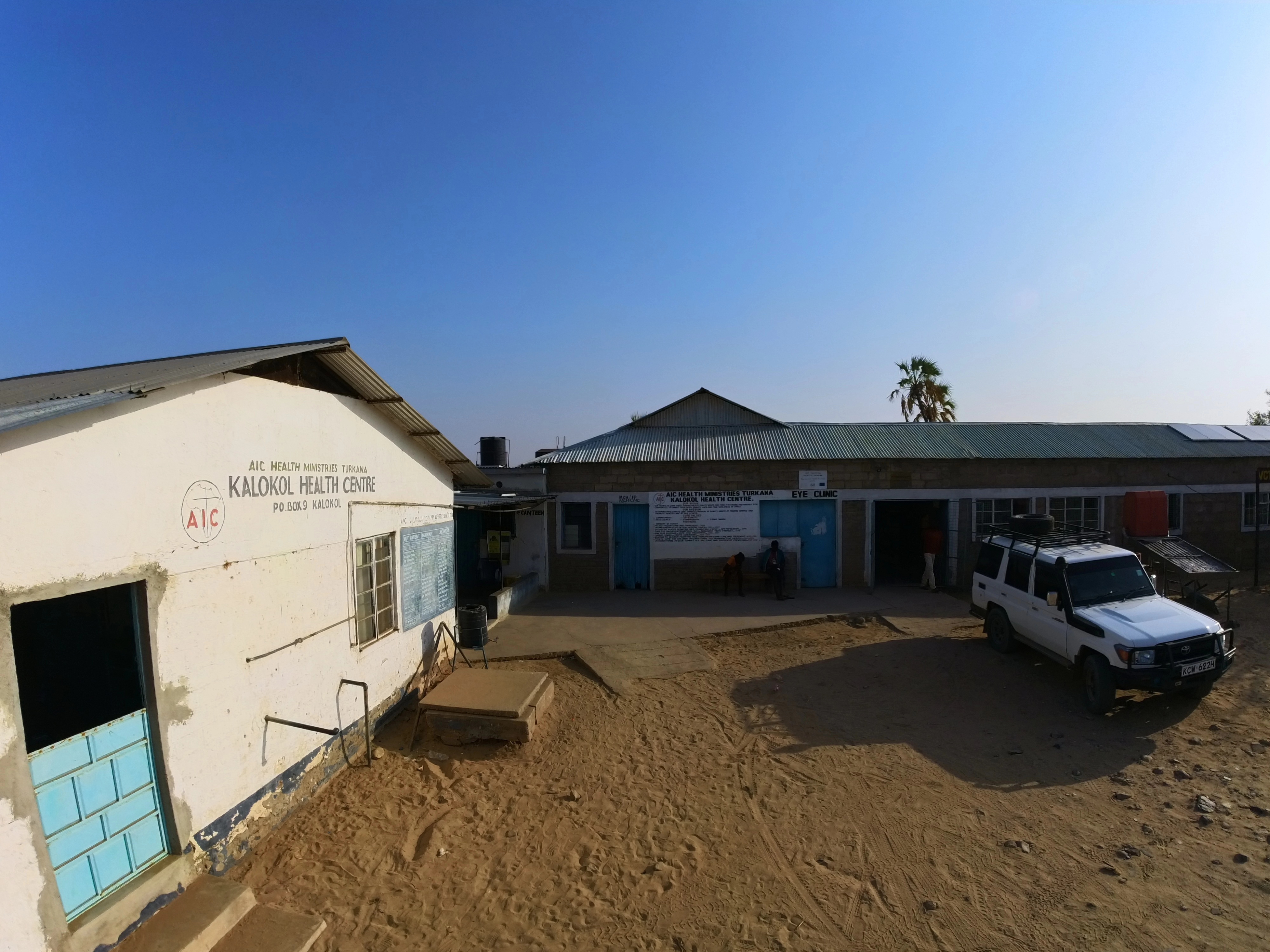How solar power is transforming maternal healthcare in remote parts of Kenya
Without reliable electricity to power overhead lighting and other indispensable equipment, health clinics in remote areas of Kenya struggle to provide safe maternity services, particularly at night. According to WHO estimates, this constraint impacts roughly half of all rural facilities in Kenya. Until 2018, AIC Kalokol Health Centre, located in an off-grid area of Turkana, the largest and most deprived county in Kenya, was one of them. The nurses and doctors of AIC Kalokol habitually tended to mothers giving birth in the hours of darkness with spotty illumination provided by lamps and torches, or when they failed, even the light from their mobile phones.
Local mother Susan Imoni has given birth at night at AIC Kalokol not once, but twice. After enduring a 10km journey from her home village in 2013, Susan was in the midst of giving birth to her firstborn when she noticed the lantern held by the nurse begin to fade. Susan vividly recalls the immense stress of that night even a decade later:
The lantern died before the doctor had finished cutting the umbilical cord. The nurses hurried off to find alternative sources of light whilst I waited in the pitch black holding my newborn daughter, and I remember just how scared I was for both of us.
AIC Kalokol has been delivering essential health services for over half a century to a growing catchment area now numbering almost 20,000 people. Pregnant women going into labour in this remote region during the hours of darkness long faced a harrowing dilemma. If they lived far outside the tiny town of Kalokol, their journey by vehicle along rough and unlit cross-country roads was invariably an arduous one. Upon arrival, nurses would emerge from the adjoining staff quarters brandishing lamps or torches, but the sight of a clinic shrouded in darkness was still a deterrent to many women frightened by the unknown and the prospect of snakes, scorpions or spiders crawling unnoticed onto the premises at night.
Given the precarious conditions under which night staff operated, it was not uncommon for the women to be advised to return home, if they lived near enough and birth was not imminent. But many others chose not to venture out at night at all, opting instead for a safer journey after daybreak. However, that decision came with its own set of risks. It increased the likelihood of mothers giving birth enroute and limited the time window in which staff could intervene effectively in case of complications during labour. Tragically, a number of women who decided to wait until light arrived in critical condition, resulting in the loss of lives for both mothers and babies. Needless to say, the devastating impact of maternal mortality casts a very long shadow over families and communities, typically blighting the health and educational outcomes of the surviving children.
All that changed with the installation of an 800Wp standalone solar system at AIC Kalokol in 2018 through Project Jua (meaning ‘sun’ in Swahili). Funded by OVO Foundation, the charitable arm of OVO Energy, and implemented by Energy 4 Impact, Project Jua has improved service provision at 54 clinics across the rural counties of Kwale, Kilifi, Taita Taveta, Turkana and Isiolo through the installation of solar PV systems. For healthcare provision at night, the systems not only enable overhead lighting, but also provide crucial electricity to power some of the medical equipment needed for emergency cases.
Nurse Beatrice Tarus highlights the striking improvement in working conditions since the installation of the solar system:
The lack of overhead lighting not only placed patients at risk back then, but also put terrible strain on the medical staff. Rushing around in the near-dark with lamps caused us to bump into things; it was harder to mop up spilled fluids, and we often couldn’t sterilise equipment properly which increased the risk of infection. Working in an unlit facility made nurses worry about their own security too. Such stress and disorganisation was the last thing any of the staff wanted for mothers in labour, so it was a real blessing when power and lighting enabled the team to do their jobs properly. Staff morale has improved immensely.
The solar PV system has also enabled staff to make regular use of machines and equipment that circumvents the development of serious conditions. Blood pressure monitors allow nurses to monitor concerning elevations in blood pressure and administer appropriate medication. The suction machine is an indispensable device in any number of circumstances during and after birth, particularly when the baby ingests fluid. Simply being able to switch on the wall heater after premature births is also invaluable as it prevents the baby’s temperature from dropping to dangerous levels, a particular risk during the chill of night. When a newborn baby is weak and struggling to fill their lungs, the use of an oxygen concentrator aids their breathing, providing essential support to improve their respiratory function.
When Susan gave birth at AIC Kalokol again in 2022, her experience of childbirth starkly contrasted to her first time nine years earlier. Arriving at AIC Kalokol in the early evening, she found a queue of several expectant mothers, reflecting the increased numbers now being seen by the clinic. However, the atmosphere was far less fraught. At one point during the delivery, one of her twin babies inhaled amniotic fluid, but the doctor was able to remove it quickly with the suction machine, ensuring the baby's airways were clear and their breathing unobstructed.
Susan remains grateful that her second time giving birth at the clinic time went more smoothly:
The lighting was as bright as day which made all the difference. After giving birth to twins, I was even more exhausted than the previous time, but now I could rest properly on the ward without worrying about the darkness and getting bitten by creepy crawlies.
Having a well-lit ward also allowed nurses to monitor Susan for six hours after birth, just like they would any other new mother, so they could keep an eye out for postpartum haemorrhaging that might give rise to a range of life-threatening complications.
Of course, the electricity-enabled maternity services offered by AIC Kalokol are not just confined to labour and delivery. The clinic provides pre-natal check-ups to expectant mothers at least four times prior to giving birth during which nurses gauge blood pressure and monitor the foetus with the ultrasound machine that a county health worker brings to the clinic at weekends. The clinic’s antiquated paper filing system, whereby patient records where frequently damaged or lost, has been replaced by a computerised system which helps nurses speedily retrieve the mother’s details. Vaccination stocks are also stored in the clinic fridge, and once the baby is nine months old, they receive their shots for measles and TB.
Nevertheless, the upgrading of maternity services provided by AIC Kalokol remains a work in progress. Several appliances donated over time by well-wishers, such as an autoclave for sterilising harmful bacteria on surgical implements, are gathering dust. The clinic also has an incubator, a critical device used to stabilise premature babies, that demands more power that the current solar PV system can provide.
Tilen Ogola, Energy 4 Impact’s Senior Technical Advisor for Project Jua comments,
Our assessment in 2017 indicated that AIC Kalokol had greater energy needs than the proposed system size, which had been standardised across all Jua sites by necessity to streamline operations and maintenance logistics. As the better equipped and electrified referral facility in the town of Lodwar is more than 50km away, we decided that a reliable power source could still make a pivotal difference to patients coming to this clinic. The striking improvement in the quality of their maternity services over the last five years, along with outcomes for mothers and babies, suggests the system has brought very tangible benefits to AIC Kalokol.
The emphasis on system maintenance by Project Jua is highly valued by the clinic and its patients. Without rigorous maintenance procedures in place, clinic electrification projects tend to fall into disrepair, sooner or later. System breakdowns not only jeopardise the health of patients, but it also feels like a demoralising step backwards for staff often no longer able to use equipment on which they have come to rely. That’s why efficient and effective maintenance is at the heart of Project Jua. The project operates a remote monitoring system pulling real-time data on parameters such as power consumption and battery status. Clinic staff have been trained to conduct routine checks on the system and can address minor faults with support from the Energy 4 Impact’s team helpline. Local electricians are also on hand to handle more complex issues as well as conduct preventative maintenance checks on an annual basis.
The clinic has undoubtedly made tremendous strides since the installation of the solar system in 2018. With a growing reputation for safer deliveries, it is now the health facility of choice for many expectant mothers across the area, with some passing other clinics without reliable heating and lighting enroute to AIC Kalokol. The number of babies delivered at the clinic has tripled over the last five years to roughly fifty or sixty per month. With more staff joining this bustling facility, the clinic aims to build a dedicated maternity ward in the near future. Whilst there is more work to be done to upgrade their diagnostic and treatment services, electrification has had a transformative impact on maternal healthcare in this community, an achievement of which the staff of AIC Kalokol are justifiably proud.



